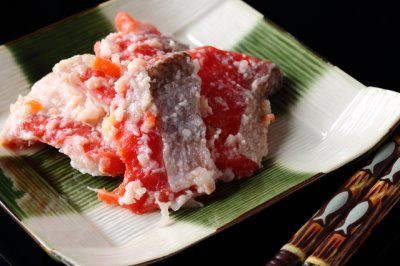 Conveyor belt sushi has long been a huge hit ? not just in Japan, but around the world. So why are more stores moving away from it? (Picture: PIXTA(????))
Conveyor belt sushi has long been a huge hit ? not just in Japan, but around the world. So why are more stores moving away from it? (Picture: PIXTA(????))
By Jay (Publisher, Unseen Japan)
I recently re-started taking Japanese lessons with my teacher on iTalki. In this week?s lesson, we read and discussed an online essay about the history of sushi. At the end of our discussion, my teacher talked about how, as a teenager, she had worked at a conveyor belt sushi restaurant (????; kaiten zushi).
?But things are changing,? she said. ?Revolving conveyor belts are going out of style.?
?Really?? I asked. This was the first I?d heard of this.
After our lesson, my teacher sent me evidence to confirm that yes, indeed ? conveyor belt sushi was dying. It?s not that the idea of quick-order sushi is dying. What?s going out of style is the revolving conveyor belt gimmick. And it turns out there are good reasons why.
(JP) Link: The Conveyor Abandonment Movement! Why ?Non-Revolving Revolving Sushi? is on the Rise
?????????????????????????? – NAVER ???
?????????????????????????????
matome.naver.jp
Sushi: Japan?s Original Fast Food
Sushi, as we know it today, is a fairly recent invention. The original form of sushi was narezushi (????). Instead of using sushi vinegar as is done today, narezushi?s taste came from fermenting it with rice and salt. The fermenting process took about a year.
Narezushi came of age in Japan?s Heian era (794?1192 AD). Because of the time and labor involved, people regarded it as high-end cuisine. Ordinary people used it to pay taxes, but only priests and nobility generally ate it.
 A type of narezushi. (Picture: PIXTA(????))
A type of narezushi. (Picture: PIXTA(????))
The start of the Edo era (1603?1868) saw the birth of hayazushi (??). To make hayazushi, you push lightly pickled fish into rice that had salt and vinegar added to it. Hungry sushi-lovers could eat the dish after it had sat for a few hours. Compared to narezushi, it was, as its name implies, ?? ( hayai), or ?quick.?
But not quick enough. Near the end of the Edo period, hayazushi gave way to nigiri-zushi (????), in which chefs ?grip? a regular piece of seafood (or another ingredient, such as cooked egg) together with a bed of vinegared rice. The dish became popular at ???? ( tachigui) stands, where people could eat while standing.
The form of nigiri in the Edo era was a little different than it is now. Most notably, it was about two to three times larger than the bite-sized portions we eat today. But what Japan (and the world) today enjoys as ?nigiri-zushi? is more or less a direct descendant of its Edo ancestor.
Taste and Waste Spell Doom for Conveyor Belt Sushi
The conveyor belt was the brainchild of Shiraishi Yoshiaki ( ????), who operated a chain of standing eateries in Osaka. After seeing a conveyor belt used in the production of beer, he created Genroku Sushi, the first conveyor belt sushi store, in 1958. Chefs standing behind a counter would prepare the sushi and place it on the belt. Customers would grab pieces as they came past. Shiraishi figured this would reduce labor costs as well as food waste. The novel idea was such a hit that it?s even spread outside of Japan.
Recently, however, businesses have realized that the conveyor belt system isn?t as efficient as its founder intended. When conveyor belt sushi chain Genki Sushi did a survey, it discovered that the revolving lane only accounted for 15% of the sushi that customers ordered. There?s also a freshness issue. Sushi is best eaten right after it?s made. Customers who take a piece off of a conveyor have no idea how long it?s been making the rounds. And every time a store has to toss a piece of uneaten sushi, it takes a monetary hit.
(JP) Link: Non-Revolving Revolving Sushi Boom?! The Merits to the Introduction of the ?Express Lane?
??????????????!? “?????”????????????? | ??????
?????????????????????????????????????????????????????????????????????? ????
www.dailyshincho.jp
So it?s not surprising that many large chains are converting into ???????? ( mawaranai kaiten-zushi), or ?non-revolving conveyor sushi.? Stores owned by chains such as Genki Sushi have replaced the round conveyor belt with a ?conveyor line.? Customers order their sushi on a touchscreen. Their orders are made for them fresh and sent to them directly on the line.
Some customers online express disappointment at watching this novelty walk slowly towards the sunset. Others, however, appreciate the made to order approach. And given the vast amount of waste involved in conveyor belt systems, I can only imagine that this trend away from pre-made, rotating sushi will accelerate.
I?m the publisher of Unseen Japan. I hold an N1 Certification in the Japanese Language Proficiency Test, and am married to a wonderful woman from Tokyo.
Like our content? Get a weekly summary delivered to your inbox, along with special offers on great Japan-related products by signing up for our newsletter!
Originally published at https://unseenjapan.com on November 8, 2019.


